You rely on your Honeywell humidifier to keep the air in your home moist and comfortable, but it’s not working right. Now what? This article will provide some quick fixes for a non-functioning Honeywell humidifier. It will also provide tips on how to prevent these problems from occurring in the future. Honeywell humidifiers are designed to be easy to use and reliable. They are the best equipment you can buy to improve the air quality in your home.
What are Honeywell Humidifiers?
Honeywell humidifiers are devices that emit water vapor into the air to raise the humidity levels in a room. They are often used in homes and office buildings during the winter months when the air is naturally drier. Honeywell humidifiers come in a variety of types including console, evaporative, and ultrasonic.
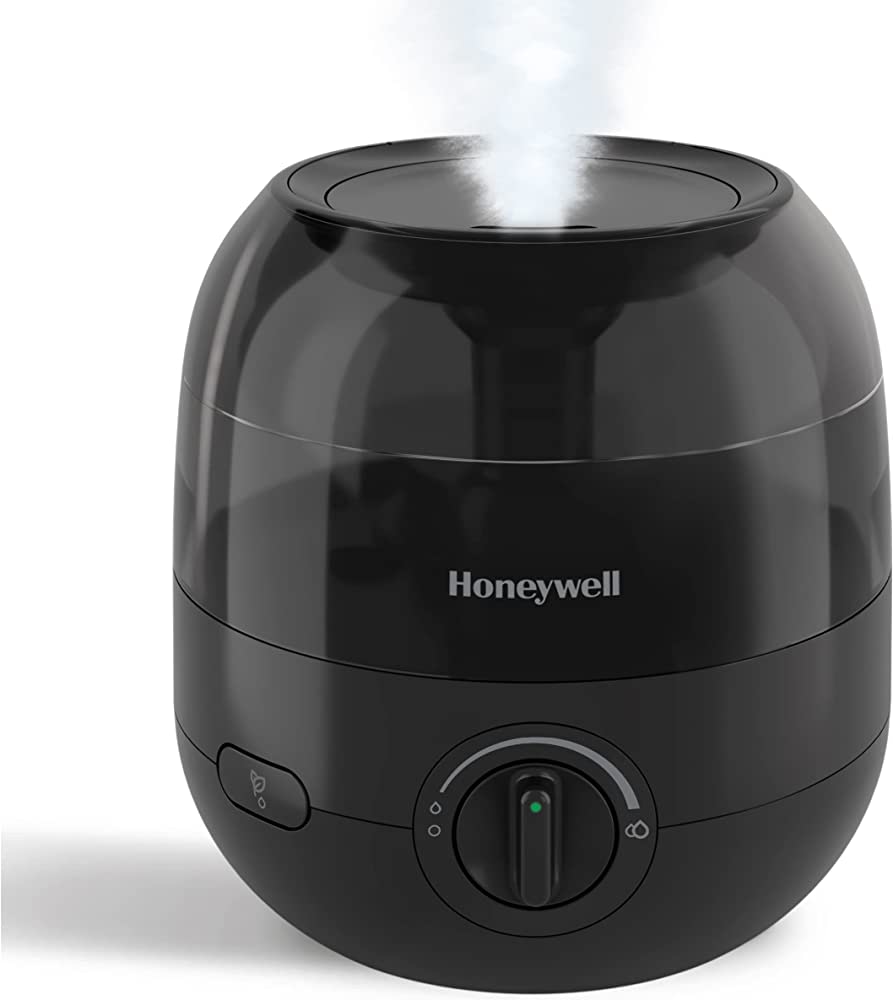
A Honeywell humidifier works by taking water from its internal reservoir and passing it over a wicking filter. This filter is generally made of paper or cloth and absorbs water. The water-saturated filter is then heated by an electric element which causes the water to evaporate into the air.
Some Honeywell humidifiers also have a built-in humidistat that monitors the humidity levels in the room and turns the device on or off to maintain the desired level [1].
Construction details of Honeywell Humidifiers
Most Honeywell humidifiers are of the evaporative type. This means that they have a wick that absorbs water from the unit’s tank, and a fan that blows air over the damp wick. The water vapor created by evaporation then mixes with the dry air in your home and increases the overall humidity levels.
There are a few different models of Honeywell humidifiers on the market, but they all operate using this same basic principle. They are usually made of plastic, with a metal wick holder and metal fan blades. The units vary in size but are typically around 17,7 inches tall and 11,8 inches wide.
The models of Honeywell humidifiers come in different designs, but the most common one is the tabletop version. These units are usually small and compact, making them easy to move from one room to another. Some models of tabletop Honeywell humidifiers come with a built-in handle, while others do not.
Honeywell also manufactures floor-standing humidifiers, which are larger and require more space. These units are typically around 47 inches tall and 11,8 inches wide. They have a larger tank that holds more water, and a stronger fan that can circulate the air in a room more effectively.
There are two main types of Honeywell humidifiers: warm mist and cool mist. Warm mist humidifiers work by heating the water in the unit’s tank to boiling and then releasing the steam into the air. Cool mist humidifiers, on the other hand, do not use heat. Instead, they use ultrasonic vibrations to create a fine mist of water that is released into the air.
What can cause a Honeywell Humidifier to stop working?
There are several reasons why your Honeywell humidifier may have stopped working. The most common reason is that the filter needs to be replaced. If the filter is not replaced regularly, it can become clogged with minerals from the water which can impede water flow and prevent proper operation.
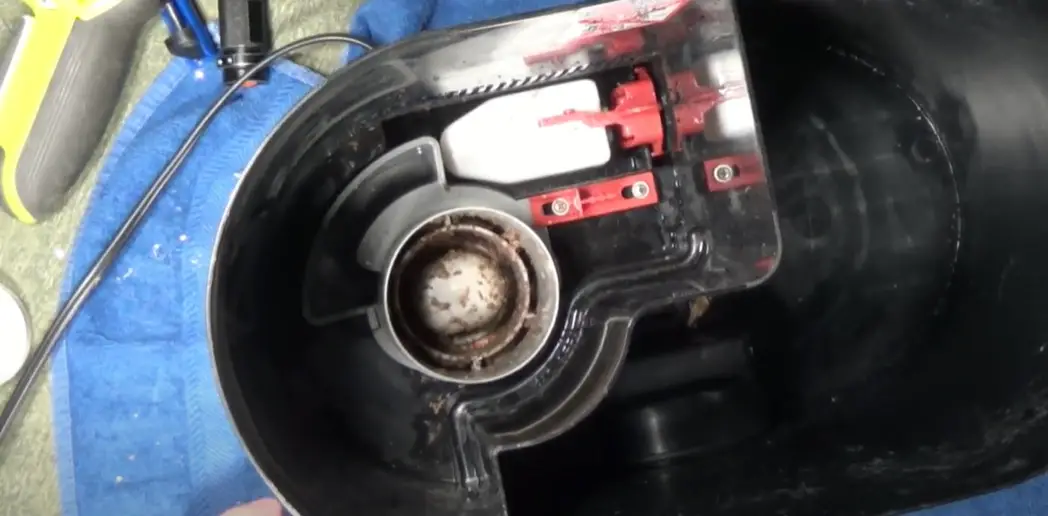
Another common reason for a Honeywell humidifier to stop working is that the unit has run out of water. Most Honeywell humidifiers have an automatic shut-off feature that kicks in when the unit is empty, however, if this feature is not working properly, the humidifier will simply turn off.
Finally, if none of these solutions work, it is possible that your Honeywell humidifier simply needs to be replaced [2].
Why is my humidifier not producing mist?
Possible power issue
The first thing you should check is whether the humidifier is properly plugged in and that there is power running on it. If the humidifier has an indicator light, see if the light is on. If not, then the humidifier may not be receiving power. Check your home’s fuse box or circuit breakers to make sure a blown fuse or tripped breaker isn’t the reason for the lack of power.
Empty water tank
If the water tank is empty, then the humidifier can’t produce mist. Make sure to fill the tank with fresh, clean water according to the manufacturer’s instructions. You may also need to descale the unit if it hasn’t been used in a while or if you live in an area with hard water.
Clogged wick filter
Another possible reason for a non-functioning humidifier is a clogged wick filter. The wick filter helps to absorb water from the tank and deliver it to the evaporator pad. If the filter is clogged, it can block water from reaching the pad and prevent the humidifier from working properly. Try soaking the filter in warm soapy water and then rinsing it well. You may also need to replace the filter if it’s damaged or significantly clogged.
Humidifier position
The position of the humidifier can also affect its performance. Make sure the humidifier is level and not tilted in any direction. If the unit is tilted, it may not be able to draw water from the tank properly. The stability of the humidifiers can also be provided by using a humidifier stand. This stand will also help to keep the humidifier away from walls and other surfaces, which can prevent proper airflow.
Build-up on evaporator pad
If there is a build-up of minerals on the evaporator pad, this can prevent mist from being produced. Try soaking the pad in white vinegar for 30 minutes and then rinse it well. You may need to replace the pad if it’s damaged or significantly clogged.
Mineral deposits in the water tank
The mineral deposits can also build up in the water tank and prevent the humidifier from working properly. Try filling the tank with a solution of equal parts white vinegar and water. Let the solution sit for 30 minutes and then flush the tank with clean water. You may need to descale the unit more frequently if you live in an area with hard water.
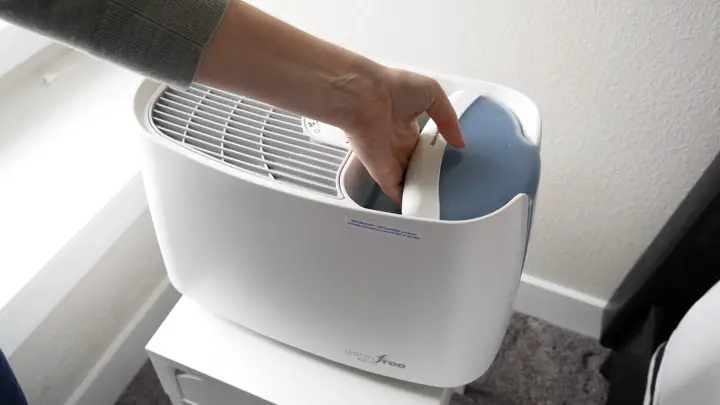
Check the humidistat
The humidistat is responsible for regulating the level of humidity in the room. If the humidistat is set too low, the humidifier will turn off before it can reach the desired level of humidity. Try raising the setting on the humidistat and see if that helps the humidifier to function properly.
Leaks in the unit
If there are any leaks in the humidifier, this can prevent it from working properly. Check all of the connections and seals to make sure they are tight and not leaking. You may need to replace the gaskets or other parts if they are damaged or worn.
White dust
If you notice white dust on the furniture or other surfaces in the room, this can be a sign that the humidifier isn’t working properly. White dust is airborne minerals that are released into the air by the humidifier. This can happen if the water in the tank is too hard or if there is a build-up of minerals on the evaporator pad. Try using distilled water in the humidifier to see if that helps to reduce the amount of dust being released into the air.
Resetting the Honeywell humidifier
If your Honeywell humidifier has stopped working, the first thing you should do is reset it. To do this, simply unplug the unit from the power outlet and then plug it back in. This will often clear any minor issues that may have caused the unit to stop working. The humidifiers have different settings. Among them are low, medium, and high. The meaning of these is pretty straightforward. If your room is small, go for the low setting. If it’s average-sized, choose medium, and if it’s large, opt for high. To adjust the settings, find the knob on the front of your unit and turn it to the desired setting.
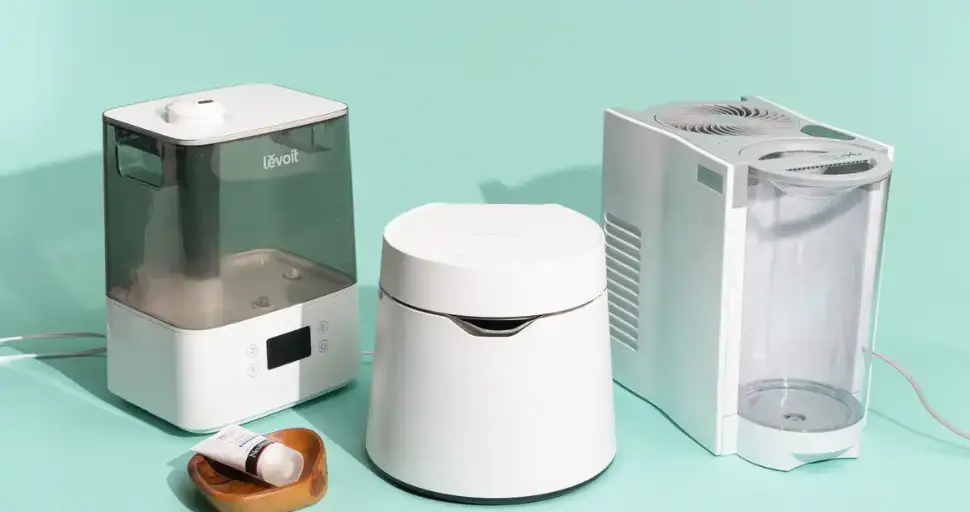
There is also an automatic setting. This one will adjust the output based on the conditions in the room. For example, if the air in the room is already quite humid, the unit will automatically reduce its output so as not to over-humidify the space [3].
When and how should you replace the Honeywell humidifying filter?
Honeywell humidifiers are designed to improve indoor air quality by adding moisture to the air. However, over time, the filter in your humidifier can become clogged with minerals and contaminants, which can reduce its efficiency or even prevent it from working altogether. For this reason, it’s important to replace the filter according to the manufacturer’s instructions – typically, every 1-3 months.
In some cases, however, the problem may be with the humidifier itself. If your humidifier is more than a few years old, it may be time to replace it. Honeywell offers a wide range of both whole-house and portable humidifiers, so you’re sure to find one that’s right for your needs.
When selecting a new humidifier, pay attention to the features that are most important to you. If you have allergies or asthma, for example, look for a humidifier with an antimicrobial filter to help remove contaminants from the air.
Humidity levels for your home
The humidity level is an important factor to consider when using a humidifier in your home. The ideal humidity level is between 30 and 50 percent. If the humidity level in your home is too high, it can lead to condensation on windows and walls, musty odors, and an increased risk of mold and mildew growth. If the humidity level is too low, it can cause static electricity, dry skin, and respiratory problems.
By determining the best humidity level for your home you should consider both the health of your family and the needs of your home. The climate you live in, the number of people in your household, and any respiratory problems should all be taken into account. It means that you might need to adjust the humidifier settings throughout the year to account for changes in the weather and your family’s needs. Additionally, some humidifiers have built-in humidistats that will automatically adjust the humidity level to maintain a comfortable home environment [4].
Comparison of Using a Humidifier With or Without a Filter
Deciding whether to use a humidifier with or without a filter is an important consideration for maintaining indoor air quality and the effectiveness of the device. Below is a comparison of using humidifiers with and without filters, helping you make an informed choice.
| Aspect | Using Humidifier With Filter | Using Humidifier Without Filter | Advantages | Considerations |
|---|---|---|---|---|
| Humidity Control | Provides more precise humidity control by trapping minerals and impurities from the water. | May offer less precise humidity control, as it doesn’t remove minerals and impurities from the water. | Prevents over-humidification and maintains consistent humidity levels for improved comfort. | Regular filter replacement and cleaning are necessary to maintain effectiveness. |
| Air Quality | Filters airborne particles, allergens, and impurities, improving indoor air quality. | May not filter airborne particles and allergens, potentially affecting air quality. | Reduces allergen exposure and ensures cleaner air, benefiting those with respiratory issues. | Requires using filtered or distilled water to prevent mineral buildup in the unit. |
| Health and Comfort | Creates a healthier and more comfortable indoor environment by delivering clean, moist air. | Still provides humidity, but may not maintain the same level of cleanliness in the air it produces. | Reduces allergy symptoms, dry skin, and respiratory discomfort, promoting better well-being. | Regular cleaning and maintenance are crucial to avoid mold or bacterial growth in the unit. |
| Mineral Buildup | Prevents mineral deposits and white dust issues in the humidifier and the air it produces. | May result in mineral deposits and white dust issues, especially in areas with hard water. | Extends the lifespan of the humidifier and ensures clean mist output without mineral buildup. | Requires using filtered or distilled water to prevent mineral accumulation. |
| Maintenance | Requires regular filter replacement or cleaning, but this helps maintain the device’s efficiency. | Requires less filter-related maintenance, but may need more frequent cleaning to prevent issues. | Saves on filter replacement costs but may necessitate more cleaning efforts for mineral and mold prevention. | Choosing a filter or filterless humidifier depends on your maintenance preferences and local water quality. |
Explanation of the table:
- The table provides a comparison of using a humidifier with or without a filter, addressing aspects such as humidity control, air quality, health and comfort, mineral buildup, and maintenance.
- Each aspect is described, highlighting the advantages and considerations associated with these two options for using a humidifier.
FAQ
Why is my Honeywell humidifier not working?
There are a few reasons your Honeywell humidifier may not be working:
- The water tank might be empty
- The unit might be dirty
- The Wick filter might need to be replaced
If your Honeywell humidifier is not working, try these quick fixes:
- Fill the water tank and make sure it’s properly seated
- Clean the unit according to the manufacturer’s instructions
- Replace the Wick filter if it’s clogged or damaged
If these quick fixes don’t solve the problem, contact a Honeywell customer service representative for further troubleshooting assistance.
How do I know if my Honeywell humidifier is broken?
There are a few signs that your Honeywell humidifier may be broken:
- The unit doesn’t turn on
- The unit doesn’t produce any mist
- The mist produced is very faint
If you notice any of these signs, it’s best to contact a Honeywell customer service representative for further troubleshooting assistance.
How often should I replace the filter in my Honeywell humidifier?
The frequency with which you need to replace the filter in your Honeywell humidifier depends on the model of humidifier you have. Consult your owner’s manual for specific guidance. In general, however, it’s a good idea to replace the filter at least once per season or every three months, whichever comes first.
My Honeywell humidifier is leaking. What should I do?
If your Honeywell humidifier is leaking, the first thing you should do is check the water tank to make sure it’s properly seated. If the tank is loose, tighten the screws that hold it in place. If the tank is tight but the unit is still leaking, try these other troubleshooting steps:
- Clean the unit according to the manufacturer’s instructions
- Replace the Wick filter if it’s clogged or damaged
- Contact a Honeywell customer service representative for further assistance
I can’t get my Honeywell humidifier to produce mist. What should I do?
There are a few things you can try if your Honeywell humidifier isn’t producing mist:
- Check the water tank to make sure it has enough water
- Clean the unit according to the manufacturer’s instructions
- Make sure the Wick filter is properly positioned
- Replace the Wick filter if it’s clogged or damaged
If these troubleshooting steps don’t solve the problem, contact a Honeywell customer service representative for further assistance.
How do I clean my Honeywell humidifier?
Cleaning your Honeywell humidifier is important to prevent the growth of mold and mildew. To clean the unit, follow these steps:
- Unplug the humidifier and remove all of the parts
- Clean all of the parts with warm, soapy water
- Rinse the parts with clean water and allow them to air dry
- Wipe down the inside and outside of the humidifier unit with a damp cloth
- Fill the water tank with clean water and reassemble the unit
You should clean your Honeywell humidifier at least once per week. If you live in an area with hard water, you may need to clean it more often.
Why is my dehumidifier running but not collecting water?
There are a few reasons your dehumidifier may be running but not collecting water:
- The unit might be low on refrigerant
- The air filter might be dirty
- The coils might be dirty
If your dehumidifier is running but not collecting water, try these troubleshooting steps:
- Check the refrigerant level and add more if needed
- Clean or replace the air filter
- Clean the coils
If these troubleshooting steps don’t solve the problem, contact a Honeywell customer service representative for further assistance.
Why is my Honeywell humidifier producing little to no mist?
If your Honeywell humidifier is producing little to no mist, it may be due to a clogged nozzle or a dirty wick. Clean the nozzle and wick, ensuring there are no obstructions, and this should improve mist production.
What should I do if my Honeywell humidifier is making a loud noise?
A loud noise from your Honeywell humidifier could indicate a problem with the fan or motor. Check for any obstructions and make sure the unit is on a level surface. If the noise persists, contact Honeywell customer support.
Why is my Honeywell humidifier not responding to the control settings?
If your Honeywell humidifier is not responding to the control settings, it could be a sensor issue or an electrical problem. Try resetting the unit, changing the batteries in the control panel, and if the issue continues, contact Honeywell support for further assistance.
How can I fix a Honeywell humidifier that is producing an unpleasant odor?
An unpleasant odor from your Honeywell humidifier may be due to bacterial growth in the water tank or on the wick. Thoroughly clean and disinfect the unit, and consider using distilled water to prevent future odors.
What should I do if my Honeywell humidifier is not turning on at all?
If your Honeywell humidifier is not turning on, check the power source, ensure the water tank is properly seated, and the water level is sufficient. If it still doesn’t turn on, inspect the power cord and plug, and contact Honeywell customer support if needed.
Why is my Honeywell humidifier’s display showing an error code?
If your Honeywell humidifier displays an error code, consult the user manual to identify the specific issue indicated by the code. Follow the recommended troubleshooting steps in the manual to resolve the problem.
How can I prevent mineral buildup in my Honeywell humidifier?
To prevent mineral buildup, use distilled water in your Honeywell humidifier. Regularly clean the tank, wick, and other components, and consider using a water demineralization cartridge if your unit supports it.
Why is my Honeywell humidifier shutting off automatically after a short time?
If your Honeywell humidifier is shutting off prematurely, it may be due to low water levels or an issue with the internal sensors. Ensure the water tank is properly filled, and if the problem persists, contact Honeywell customer support for assistance.
How can I troubleshoot low humidity output from my Honeywell humidifier?
If your Honeywell humidifier is producing low humidity, check for obstructions in the nozzle or wick and ensure the unit is appropriately sized for the room. You may also need to clean the unit thoroughly to improve performance.
What should I do if my Honeywell humidifier’s fan is not working?
If the fan in your Honeywell humidifier is not working, check for obstructions and make sure the unit is placed on a level surface. If the fan still doesn’t operate, it could be a motor or electrical issue, requiring professional inspection and repair.
Useful Video: Honeywell Humidifier stopped working
Conclusion
If your Honeywell humidifier has stopped working, there are a few quick and easy fixes you can try before calling customer service. First, check the water tank to make sure it is full and that the float valve is not stuck. Next, clean the humidifier’s filter and scale build-up from the wick. Finally, check the fan assembly for blockages. If these simple solutions do not fix the problem, then you may need to replace the humidifier’s filter or control board.
References
- https://www.honeywellstore.com/store/news/honeywell-humidifiers-cool-and-warm-mist-humidifie.html
- https://geniani.com/blogs/blog/why-did-my-humidifier-stop-working-how-to-troubleshoot-it
- https://hvacseer.com/honeywell-humidifier-not-working-how-to-reset-it/
- https://www.lennox.com/lennox-life/comfort-matters/getting-comfortable/three-signs-your-home-has-poor-indoor-humidity


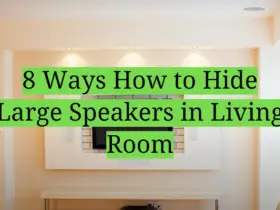








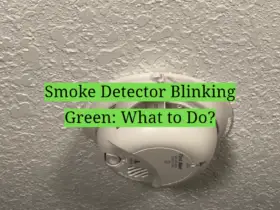


Leave a Reply